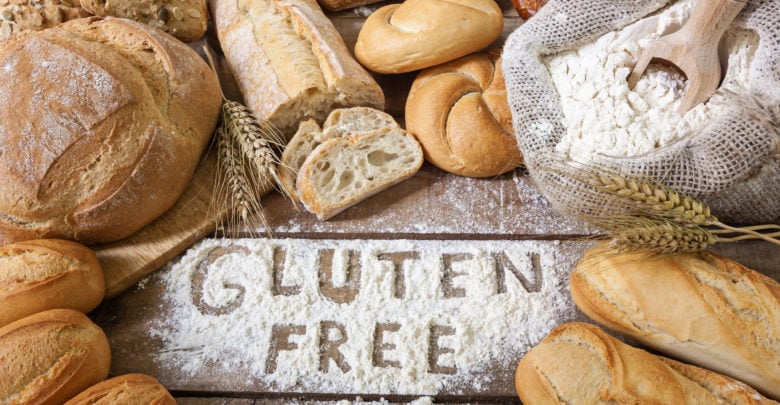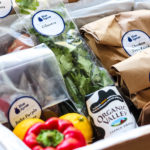Gluten-Free Diets (Right For You or Hype?)

Are you thinking about a gluten-free diet or lifestyle? If so, you aren’t alone, as a lot of us have become curious (and some obsessed) with the idea of going gluten-free for different reasons. For some this elimination is a necessity based in a medical condition (Celiac Disease), and for many gluten just seems difficult to process or digest.
But for a lot of us, we’re curious because it’s become a “hot-button” topic, or because there seems to be a lot of potential benefits involved in eliminating gluten. Fans of gluten-free and low-carb plans (they certainly don’t have to coexist but often do), suggest that the diet and lifestyle helps curb sugar cravings, eliminates bloating, improves overall digestive health, and can even help improve overall energy rates and eliminate feelings of fatigue.
But if no medical condition is present, should we really think of “gluten” as a dirty word or anything to fear? Is this simply something that for most of us, we may have an active interest in due to pop culture diet trends? Or is there something to be said for entirely eliminating it from our diets?
We certainly don’t need gluten to function, although it can be extremely difficult to completely avoid both at the grocery store and if you dine out.
But it’s not impossible and a lot of us may have friends or family in our lives who need to eliminate gluten for healthcare reasons. You may even fall into this category yourself.
So if you either need to or want to go gluten-free, how can you get started, and what are the benefits to making this change if you fall into the curious/want to category?
We wanted to explore gluten-free plans, meals, and options further. But that requires an understanding on what gluten is in the first place and how it effects food and the body.
Gluten-Free Diets: What is Gluten?
Before starting any new gluten-free plan, it’s important to understand what gluten is and if you may have any signs of an intolerance to it.
Gluten is a protein complex found in wheat (and wheat species like rye, barley, oats, breads, beers, cereals, and malts). As a relatively low-cost food material, it’s easy to find in most of the breads and foods we consume on a daily basis.
For those with gluten sensitivities, the ingredient can trigger inflammatory, autoimmune and and immunological reactions including Celiac Disease and Non-Celiac Gluten Sensitivity (found in up to 10% of the population). For those with serious allergies, the condition can be difficult to manage and live with- especially for dining out or ordering in foods. Cross-contamination can easily occur and trigger symptoms and reactions.
Usually the symptoms of gluten-sensitivity are limited to gastrointestinal problems, but can also cause vague symptoms such as headaches, feelings of bloating, psychiatric problems, and even neurological disorders.
Gluten-Free Diets: Types of Foods To Eat & Avoid
It can be difficult to follow a gluten-free diet, especially because in the U.S. gluten is not added as an ingredient on food labels unless it has been used as a standalone ingredient.
So often its best to research gluten-free foods and meals, and look for gluten-free labels or food sections at your grocery store when in doubt. You may also want to use a meal service kit or delivery subscription service with gluten-free options, ensuring that the one you have selected avoids any food cross-contamination during preparation processes.
The following list of foods and food groups do not contain any gluten and can help you start a gluten-free diet or stick to one by creating a shopping list before going to the grocery store:
- Healthy Fat Options: foods and beverages such as almond milk, nuts and nut butters, extra virgin olive oil, sesame oil, coconut oil, organic butter, cheese (excluding blue cheese) and seeds (sesame, flaxseed, chia, pumpkin) are all free of any gluten and can be excellent additions to any diet or used to cook with
- Grains free of Gluten: buckwheat, rice (brown, white, wild), millet, quinoa, sorghum and teff are all free of gluten, however oats should be limited as their physical structure can change during preparation processes and increase the chance of physical reaction
- Legumes: beans, lentils, peas, and hummus made from chickpeas
- Fresh fruit options: berries, avocado, bell peppers, cucumber, tomato, zucchini, squash, pumpkin, eggplant, lemons, limes
- Fresh vegetable options: fresh vegetables like leafy greens and lettuces, parsley, collards, spinach, broccoli, kale, chard, cabbage, onions, mushrooms, cauliflower, Brussels sprouts, sauerkraut, artichoke, alfalfa sprouts, green beans, celery, bok choy, radishes, watercress, turnip, asparagus, garlic, leek, fennel, shallots, scallions, ginger, and jicama are all free of gluten and should make up a good portion of any well-balanced healthy diet
- Proteins and meats: protein-rich wholle eggs, wild fish (salmon, black cod, mahi trout, sardines); shellfish and molluscs (shrimp, crab, lobster, mussels, clams, oysters), grass-fed meat, fowl, poultry, and pork (beef, lamb, liver, bison, chicken, turkey, duck, ostrich, veal) are all part of a gluten-free plan and can help you add sources of protein to your diet to balance out with fresh produce options
All of these foods can help you make the best shopping list prior to grocery store trips, and you can make fresh cooked and balanced meals at home working with this list.
If you enjoy dining out or ordering in, it’s important to not only be mindful of ingredients, but alert the restaurant and staff to food allergies and a gluten sensitivity prior to eating. This can help you make healthy choices that are free of gluten, and can also help in avoiding any potential cross-contamination that may occur during preparation.
While it isn’t easy to maintain a completely gluten free diet, and even those with Celiac Disease are often prone to reactions following accidental exposure, following a healthy and balanced diets with foods you can enjoy that don’t contain gluten and taking extra precautions while dining out can help you feel healthier and minimize any potential symptoms.
Gluten-Free Diets: Hype or Healthy?
For those with sensitivities and Celiac Disease, a gluten-free diet is certainly much more than “trendy” or “hype,” and is a medical necessity.
But for those of us who don’t have any particular sensitivity to gluten, eliminating the ingredient (while partially marketing hype), may actually have some benefits. A lot of fans of gluten-free diets and lifestyles say they feel increased energy, and have better digestive health, when sticking to plans lower in gluten.
This may also be that because in sticking to a gluten-free plan, you’ll likely be following a lower carb diet as well. For all of us, sensitive or not, this can mean experiencing less feelings of bloating and more stable levels of blood sugar throughout the day. With more stable levels of blood sugar, we typically feel more balanced and less mental fog.
So while some of the gluten-free trends we’ve seen in the past decade may be attributed to social media or general marketing “hype,” the payoff is definitely real for those who follow lower carb and gluten-free diets.
This can mean losing weight, but even if you’re not looking to drop any pounds, it can also simply mean feeling healthier and improvements in energy levels on a day to day.
Beverly joined MFS with a diverse breadth of experience in writing and digital marketing. Throughout the years of placing recipes on MFS, I’ve noticed an uptick in the number of “subscription boxes” for the cooking/food market. It was then that I decided to also include my own personal review of these subscriptions on MFS.





